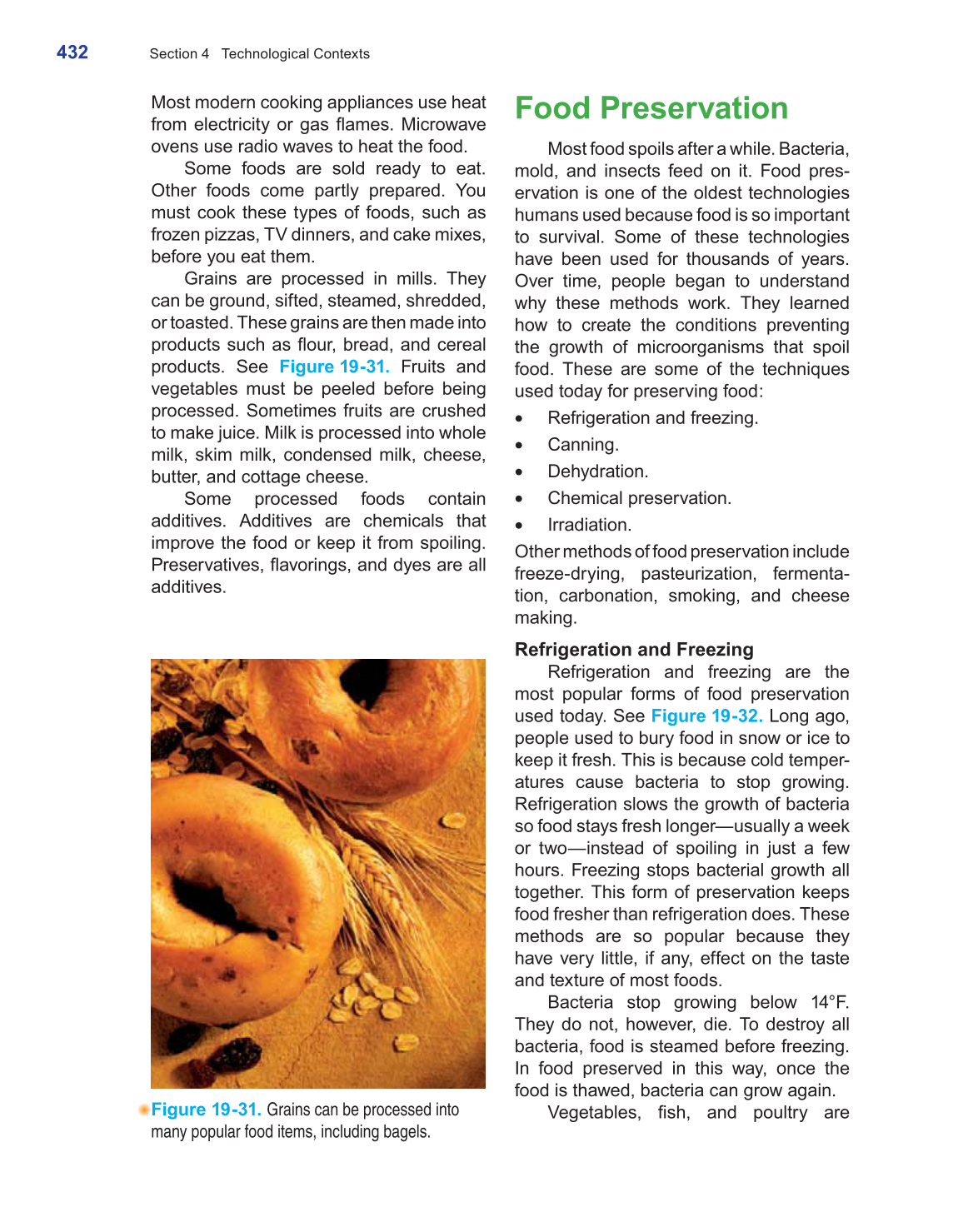432
Section 4 Technological Contexts
Most modern cooking appliances use heat
from electricity or gas flames. Microwave
ovens use radio waves to heat the food.
Some foods are sold ready to eat.
Other foods come partly prepared. You
must cook these types of foods, such as
frozen pizzas, TV dinners, and cake mixes,
before you eat them.
Grains are processed in mills. They
can be ground, sifted, steamed, shredded,
or toasted. These grains are then made into
products such as flour, bread, and cereal
products. See Figure 19-31. Fruits and
vegetables must be peeled before being
processed. Sometimes fruits are crushed
to make juice. Milk is processed into whole
milk, skim milk, condensed milk, cheese,
butter, and cottage cheese.
Some processed foods contain
additives. Additives are chemicals that
improve the food or keep it from spoiling.
Preservatives, flavorings, and dyes are all
additives.
Food Preservation
Most food spoils after a while. Bacteria,
mold, and insects feed on it. Food pres-
ervation is one of the oldest technologies
humans used because food is so important
to survival. Some of these technologies
have been used for thousands of years.
Over time, people began to understand
why these methods work. They learned
how to create the conditions preventing
the growth of microorganisms that spoil
food. These are some of the techniques
used today for preserving food:
• Refrigeration and freezing.
• Canning.
• Dehydration.
• Chemical preservation.
• Irradiation.
Other methods of food preservation include
freeze-drying, pasteurization, fermenta-
tion, carbonation, smoking, and cheese
making.
Refrigeration and Freezing
Refrigeration and freezing are the
most popular forms of food preservation
used today. See Figure 19-32. Long ago,
people used to bury food in snow or ice to
keep it fresh. This is because cold temper-
atures cause bacteria to stop growing.
Refrigeration slows the growth of bacteria
so food stays fresh longer—usually a week
or two—instead of spoiling in just a few
hours. Freezing stops bacterial growth all
together. This form of preservation keeps
food fresher than refrigeration does. These
methods are so popular because they
have very little, if any, effect on the taste
and texture of most foods.
Bacteria stop growing below 14°F.
They do not, however, die. To destroy all
bacteria, food is steamed before freezing.
In food preserved in this way, once the
food is thawed, bacteria can grow again.
Vegetables, fish, and poultry are
Figure 19-31. Grains can be processed into
many popular food items, including bagels.
